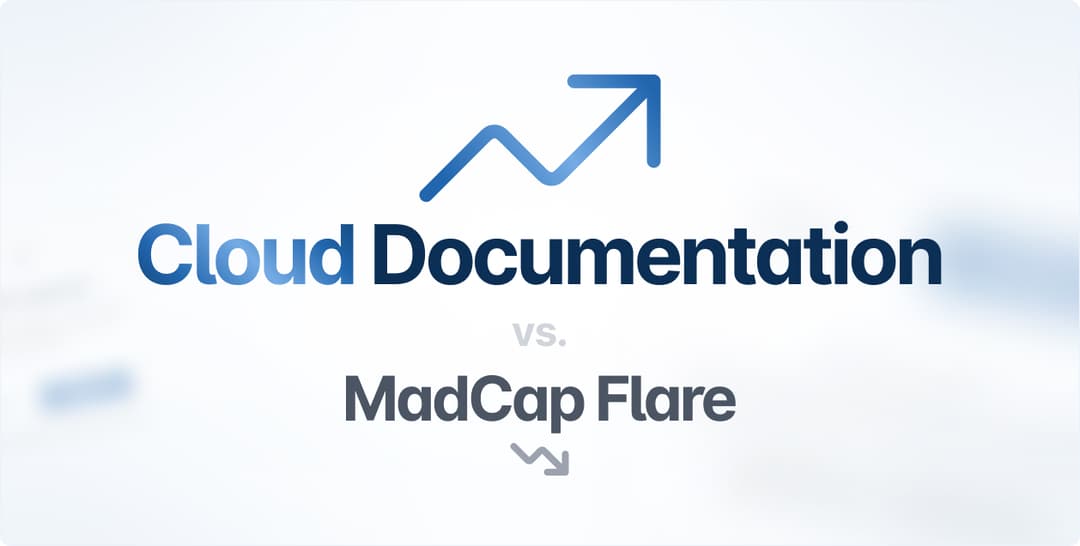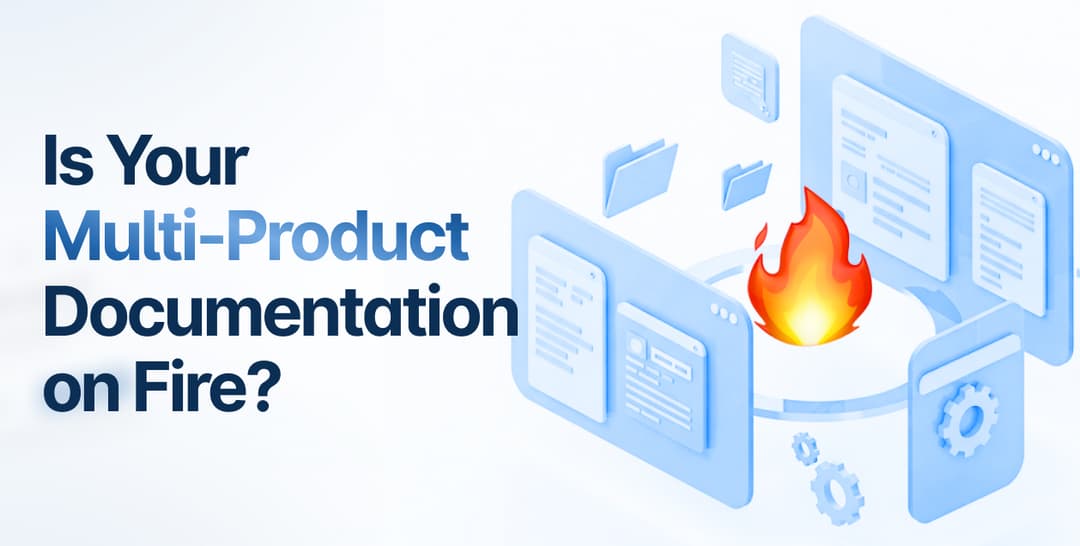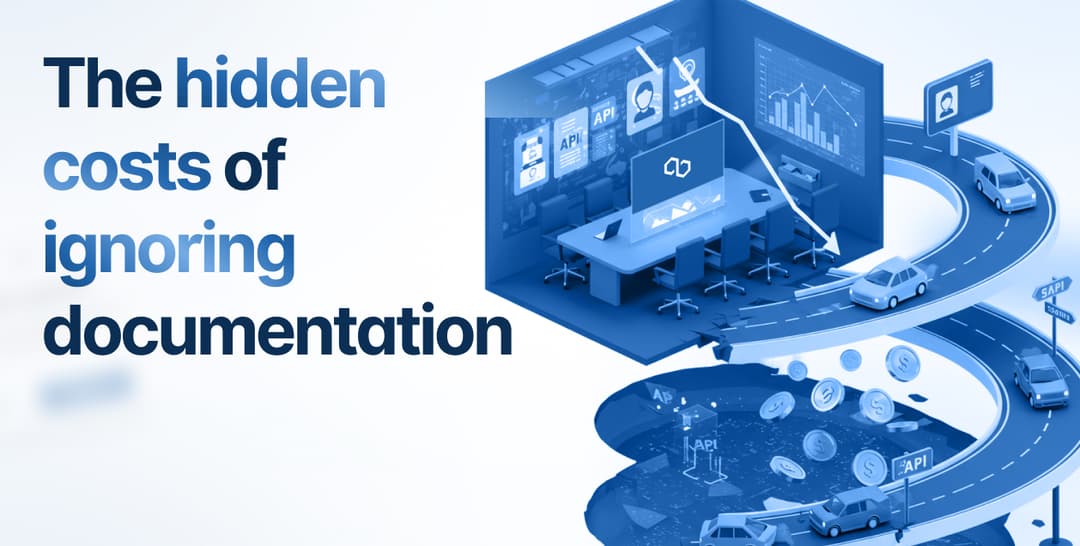Technical documentation for startups is like planning to build a house.
If you think of scaling your startup, you need to have software documentation on your list of priorities.
This is why fast-growth companies like Stripe do it religiously. From design docs to customer-facing documentation.
Of course, you can build anything without a plan, but it will bite you back at one point.
Imagine, though, that you are building a home…
A construction team is brought in after the architect draws up the plans. Construction crews may miss essential elements if the architect fails to describe methods well.
Software (or houses, for that matter) can start without documentation, but you need a documentation strategy to have a strong foundation and move fast.
If you didn't write technical documentation until now for your startup, no worry, you could create a retroactive plan of what was built, why it was made, and how it works.
Here is what you need to know about technical documentation for startups based on what we gathered talking with our users.
Why do startups need technical documentation?
It is helpful to have technical documentation on both the internal and external sides of a software team.
Tech docs are used internally to review the development and how the new features are compliant with the system. Also, it speeds up new developer onboarding and helps them learn how stuff works without having long conversations or 1-1 calls or chat threads.
Externally, it offers insights into how the system works, and developers will especially appreciate this when they need to work with your product.
The good, the bad, and the ugly of startup tech documentation?
I agree that documentation wastes much time and doesn't remain agile enough for a startup. Some say that good documentation is outdated by the time it gets polished and poor documentation is useless.
For tech documentation to work for a startup, it needs to be a continuous game of keeping it up to date so that it represents the current state of the product. While this is time-consuming, it is less stressful than working without documentation.

How to write technical documentation for startups?
As with anything else, you need a good strategy when you write technical documentation for startups. In part, you need to balance how fast you build the product with how long you spend writing documentation.
To achieve this balance, determine what information you need to collect about your system and how to record it. It depends on the type of software being written but usually revolves around:
- The architecture of a software system and how the components interact
- How do third-party dependencies work
- The implementation and integration of each feature
- Coding reference materials (e.g., documentation on utility classes, helper functions, APIs, etc.)
- Configuration and release management, system security, SLAs.
You can effectively document your codebase with code comments, detailed technical specifications, and software architecture docs. Let’s go through each of them:
Documentation for code
Code documentation is something that you should already do. It is found directly inside the codebase in the form of annotations and comments written by the engineers writing or modifying the code.
Annotations serve as a powerful tool to generate documentation that describes how code operates in-depth (e.g., API reference). The annotation systems in most modern IDEs can generate inline help based on the source code and provide autocomplete options.
Keeping these annotations up-to-date during code review is also reasonably straightforward since code and annotation changes are easily correlated, allowing the reviewers to spot inconsistencies before committing to the codebase.

When written correctly, comments are a helpful documentation practice since it explains how things work and the reasoning behind implementation choices. These are most effective when found in parts of the code that are complex or otherwise hard to understand.
In general, use clear and concise, straightforward language with short and explicit sentences that can get you far before you need any of the following types of technical documentation.
Technical Specifications
A technical document is perhaps the most important type of document used by an engineering team. In the development process, tech specs describe how a feature is implemented before, during, and after its implementation.
Therefore, it should be a living document that is updated as required, most commonly while the feature is being developed. The writing strategy that works best for each part of the system depends on common sense and discretion. Start with a template or use bullet points to guide your writing.
[

](https://app.archbee.com/doc/q2UrUP-PPpc3XQ9Ym4Ppg/11P0Qs61p9rkMD5Z7_04D?_ga=2.57951849.278950816.1629655020-1666979669.1626433627)
Template available in Archbee.com
It is good to require explicit references in the tech specs to encourage a team to think about backward compatibility and migration when changing public-facing APIs or modifying database schema, for example.
This approach does not work very well for complex components because they are scattered throughout the documents repository. A document describing the architecture should be used to define the function in a centralized location and update it when changes are made.
Architecture Documents
Documents defining your software architecture expose the various components and their interactions as well as how they can be modified. When implementing new features, it serves as a reference for what is already available and how to use it.
As parts of a system's design, new features should be defined in accordance with the architecture documents. If any architecture changes are made, such as refactorings, it should be updated accordingly.
Diagrams might make architecture documentation less verbose and easier to read by reducing the number of words in the text.
[

](https://docs.archbee.io/native-diagrams)
Example of a diagram built with Archbee native functionality.
The engineers are the primary consumers of technical documentation, so writing the documents with the engineering team in mind as the intended audience makes sense. As a project manager, you should know this if you will be working with a distributed team that has different cultural references and languages.
Technical documentation for startups is essential for software development, especially as the codebase and the team grow in size and complexity.
The process should be kept lean, and the information clarified to easily maintain it and make the documents more functional.
Based on my experiences talking with Archbee users about writing technical documents, I think editing experience is essential to get started with tech specs and software architecture docs. Give it a try, and let us know what you think about starting your technical documentation process.
FAQ
Frequently Asked Questions
Technical documentation is crucial for startups as it helps internally to review the development and compliance of new features. It also speeds up the onboarding of new developers and helps them understand how things work without lengthy conversations. Externally, it offers insights into how the system works, which is appreciated by developers interacting with the product.


